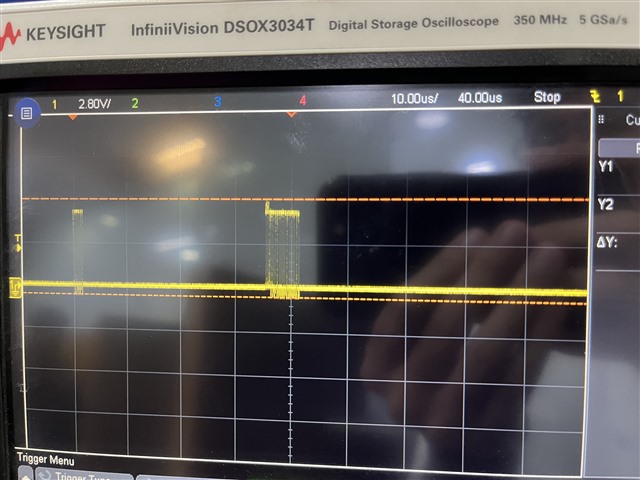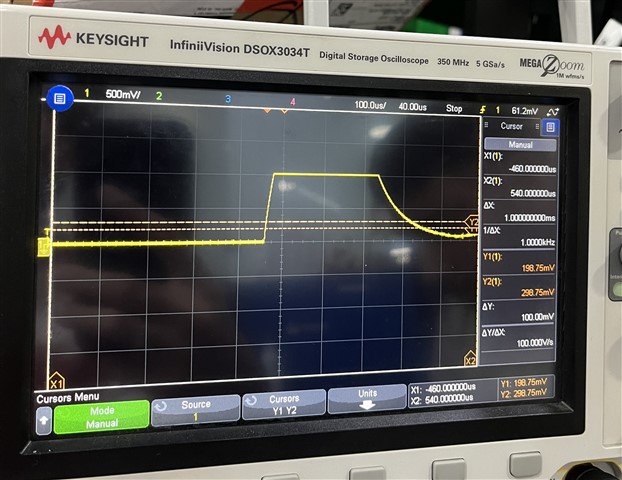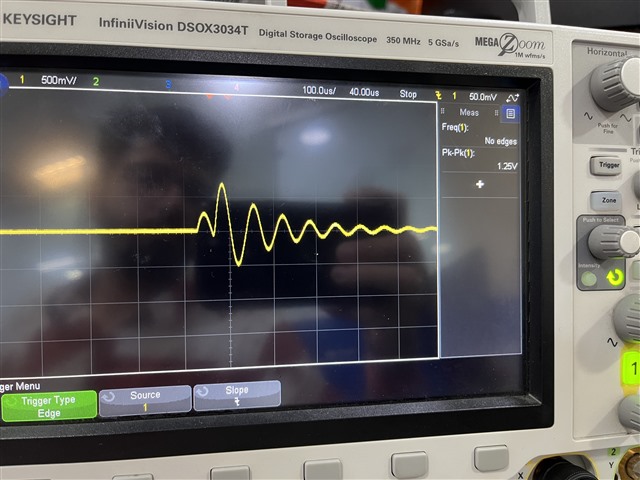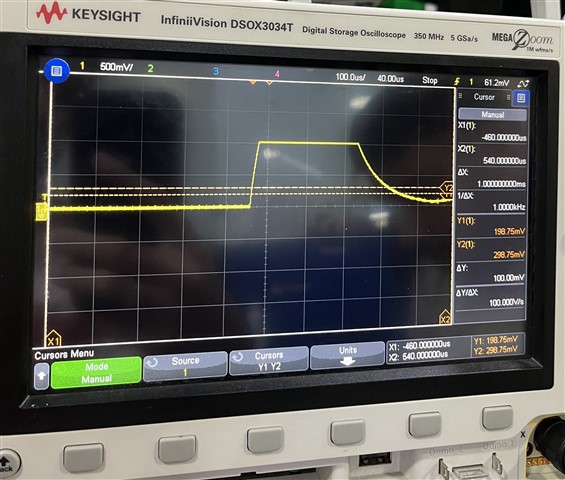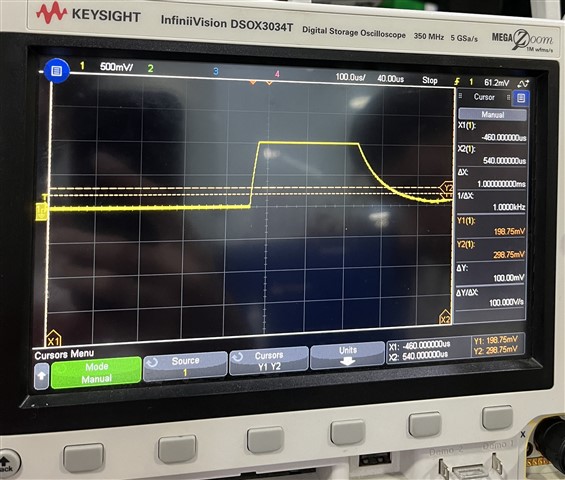Tool/software:
Hi,
I have already developed a custom board with Intel Atom E3826 (Bay Trail) which is being powered ON by TPS59641 multiphase VR (SVID, IMVP7).
The operating conditions are-
| Parameter | CPU | GFX | Unit |
|---|---|---|---|
| Number of phases | 1 | 1 | – |
| VID_Vcore_HFM (0 A) | 1.0000 | 1.0000 | V |
| R_Loadline | 5.9 | 5.9 | mV/A |
| Maximum Current (Icc_max) | 4 | 10 | A |
| Per phase Maximum Current | 4.0 | 10.0 | A |
| Thermal Design Current (I_TDC_total) | 2 | 5 | A |
| Per phase Thermal Design Current | 2.0 | 5.0 | A |
| SetVID Fast Slew Rate (Typical) | 12 | – | mV/µs |
| Load Current for Bode Plot | 4 | 10 | A |
| Vin max | 5.5 | – | V |
| Vin min | 4.5 | – | V |
| Frequency (Freq) | 500 | 605 | kHz |
| Minimum Recommended Inductance | 1.02 | 0.34 | µH |
| Maximum Recommended Inductance | 2.05 | 0.68 | µH |
| Chosen Inductance, L | 1.5 | 0.68 | µH |
| Inductor DCR (L_DCR) | 5.700 | 5.000 | mΩ |
Please find the attached Schematic and captured waveform (ac biased) for your reference.
Problem Statement: While probing the GPU phase ripples, We are observing some 50mV to 55mV peak to peak switching noise kind of thing. Please refer the attached schematic and do let us know what can be suggested to mitigate the noise.

Thank You
Raj Kumar


